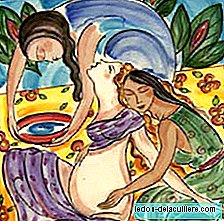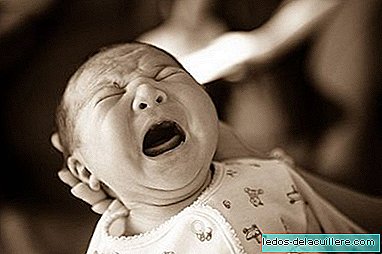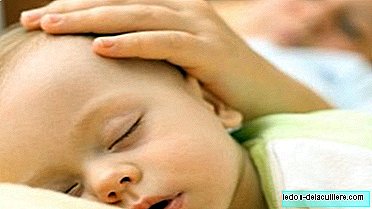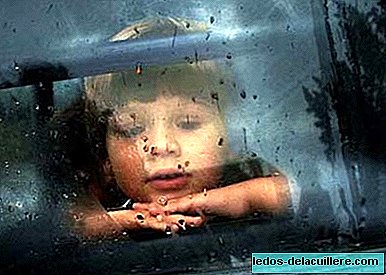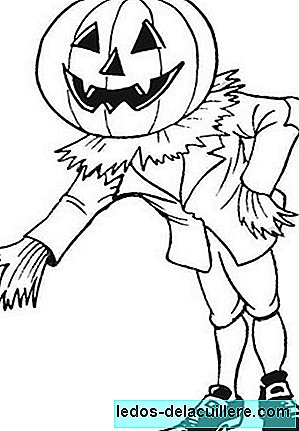Parents of children with food allergies should always be very alert, because food is not the only danger to which our children are exposed. And proof of this is the sad news that we echoed a few days ago, about the death of a girl allergic to dairy products due to a reaction to toothpaste.
Given this news, many wonder incredulously: is it possible that a toothpaste contains milk protein? And the answer is yes. In fact, there are many cosmetic products and school supplies They contain allergenic ingredients, such as milk, egg, soy, gluten or nuts.
School supplies

Children with severe food allergies and contact allergies They should pay close attention to school supplies, as it could trigger a reaction if the allergen they are sensitized is among its ingredients.
Therefore, before starting the school year, summer camps or any other educational activity is very important inform the center about the child's allergy, provide an updated dossier of the doctor and find out about the products and materials used.
 In Babies and more Nursing service in schools: more than a luxury, a necessity Luckily, more and more manufacturers of school supplies are aware of allergies in childhood, and make their products free of allergens or specify it clearly on their labels.
In Babies and more Nursing service in schools: more than a luxury, a necessity Luckily, more and more manufacturers of school supplies are aware of allergies in childhood, and make their products free of allergens or specify it clearly on their labels.In any case, in case of severe allergies it is recommended that the parents previously informed the manufacturer, to make sure that the products that our children will use in the classroom are safe for them.
Some of the products that could contain allergenic ingredients or traces are:
Tempera
Some types of tempera, both those applied by brush and tube, contain among their ingredients traces or allergens such as soy, the vegetables, or even the citrus. It is also possible to find tempers with traces of lactose.
Watercolors
As with tempera, watercolors may also contain allergenic ingredients, the most common being cereal syrup (which can cause allergic reaction to cereals and celiacs) and the potato starch (which could cause allergic reaction to this tuber).
Waxes
For the manufacture of waxes, some manufacturers use ingredients such as fat from pork, soy or even derivatives of the veal. These ingredients could trigger allergic reactions to these foods.
Finger paints
Finger paints, widely used by children in kindergartens and the Children's stage, may contain cereal syrup, as well as other allergens or traces derived from citrus.
Chalks
The classic white and colored chalks that are used in schools, may contain casein, a protein present in milk Cause of most allergies to this food. Others also contain lactose or traces of lactose or / and milk proteins.
 In Babies and more Allergy to cow's milk proteins, mediated by IgE and not mediated by IgE: differences, symptoms and prognosis
In Babies and more Allergy to cow's milk proteins, mediated by IgE and not mediated by IgE: differences, symptoms and prognosis Markers and red paints
The red dye E-120, also called carmine or cochineal extract, is obtained from the dried females of the insect Dactylopius coccus Costa (cochineal), to which some people are allergic.
Although it is common to find this additive in the food industry (sweets, strawberry yogurts, ice cream, meat products ...), we can also see it in other products such as pencils and red markers.
Clay
The plasticine, which children like so much and that can be found in all schools since the first year of childhood, usually contains gluten, so it could cause a reaction if the celiac child puts it in his mouth or swallows a piece in a way accidental.
Some also contain cereal syrup, or traces derived from vegetables or the wheat.
Hygiene and cosmetic products

In addition to certain perfumes, essential oils and plants, susceptible to trigger allergic reactions in anyone, cosmetics and hygiene products they can also be made with substances of animal and plant origin that could affect people with food allergies.
Among the foods of animal origin most used in cosmetics are the egg and milk; although we can also find ingredients derived from beekeeping such as honey, royal jelly or propolis.
With regard to vegetable ingredients, the most common are those obtained from seeds and nuts, as well as cereals Y citrus.
The reactions in children with severe allergies to these foods can become serious with simple inhalation of the product or direct contact on the skin or mucous membranes. In Babies and more Atopic dermatitis: all the keys to get to know this skin disease better
In Babies and more Atopic dermatitis: all the keys to get to know this skin disease betterAccording to article 19 of Regulation 1223/2009 on cosmetic products, all The products must contain the ingredient list, but the truth is that in many occasions it becomes difficult to read it. Therefore, it is advisable to consult the manufacturer before using a new product in an allergic person.
Some of the cosmetic and hygiene products that can trigger an allergic condition in children with this problem are:
Children's makeup
Painting your face when Carnival arrives, or on birthdays and celebrations is very fun for kids, but it can pose risks in children allergic to ingredients such as soy, the vegetables, the citrus waves milk proteins, because certain makeups (either in stick or in cream) contain some of these ingredients.
In addition, we must pay attention to allergic to dye E-120 (cochineal extract), because it can be present in carmine lipsticks.
 In Babies and more A three-year-old girl has an important allergic reaction to a child's makeup: keys to prevent incidents
In Babies and more A three-year-old girl has an important allergic reaction to a child's makeup: keys to prevent incidentsWet wipes
The classic wet wipes we use for the diaper area, as well as makeup remover wipes may contain milk proteins or traces, and cause a contact reaction.
Bath gels, shampoos and hair conditioner
Ingredients or traces of certain fruits, milk proteins, eggs, cereals and nuts They are usually the most commonly used allergens in these types of products.
Toothpaste
Although allergic reactions to toothpaste usually occur, in most cases, by menthol, we must not lose sight of the rest of the ingredients because, as we mentioned at the beginning, they could also contain other allergens such as milk proteins or traces.
Hydrating creams
And be very careful also with moisturizers, whether they are body, facial, hand, diaper creams or even sunscreen creams. On some occasions the milk proteins waves traces of milk They are part of its ingredients.
Products for everyday use with latex presence

And although latex is not a food, we wanted to include it in our list because they are many products of usual use that contain it, and that can trigger an allergic reaction in children.
To the classic gloves and other sanitary products that come to mind, we add objects as everyday as some types of stickers (those that stick and take off without leaving dreadlocks, like gomets), school supplies (glue, eraser, pens with pads ...), balloons, strips, plugs of some containers, dolls and toys, balls, useful for the baby (teats, pacifiers, teat cups, teethers ...) ...
You can check the complete list on the AEPNAA website.
As can be seen, there are many products that can contain allergenic ingredients or traces in their composition. Therefore, reading the labeling is essential, and in case of doubt it is recommended to contact the manufacturer.Photos | iStock


